
Even in the age of digital media, word of mouth is still one of the best retail marketing tools for department and online stores.
Your customers' perceptions of your business – both positive and negative – have a great impact on your brand’s image.
That’s why measuring net promoter score (NPS) for retail stores is important to better understand how likely your customers are to promote or detract from a business.
NPS is a metric used to measure brand loyalty. It helps you understand your customer's mindset, so you can improve customer experience.
How to Measure NPS for Retail Stores
Most people confuse NPS with customer satisfaction surveys.
While both tools help to determine how happy a customer is with your products/services, NPS provides a bigger picture. It measures a customer’s loyalty and how likely they are to recommend your business.
In most cases, measuring NPS for retail stores can be achieved through a customer survey. Or, it can be calculated in an entirely separate survey.
If you’re looking into utilizing NPS, here are a few steps to measure NPS and how you can use the scores to improve the perception of your retail store.
Step #1: Create a survey and ask for feedback
Create a survey or work with a customer survey company that includes questions to measure NPS.
The survey should target customers who can provide real insight into the general perception of your business.
Ask your customers, “On a scale of 0-10, how likely are you to recommend our brand to friends or family?”
Lastly, allow your respondents to explain their rating by including open-ended questions in your survey.
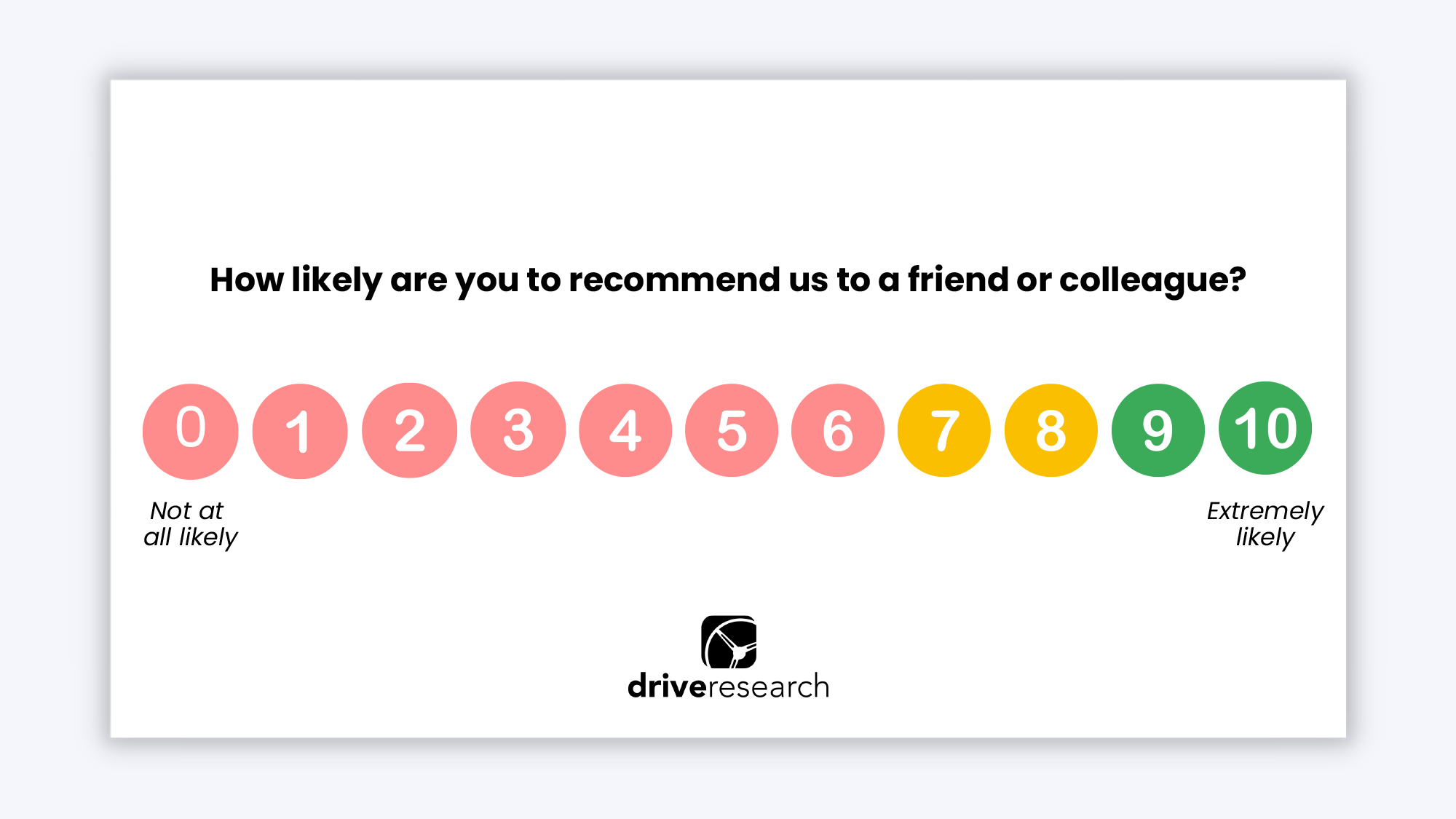
Step #2: Categorize respondents
After closing fieldwork, it’s time to analyze your results.
Start by categorizing customer responses based on their score.
- Scores 9-10 are promoters. These are the most enthusiastic customers who are more likely to recommend your store.
- Those who rated you a 7 or an 8 are passives. They’re fairly satisfied with your products/services but aren’t likely to promote your brand.
- Scores 0-6 are detractors. They’re unlikely to recommend your brand and may even share negative experiences.
This is an effective way for retail stores to measure customer satisfaction.
Step #3: Calculate your retail store’s net promoter score
The simplest way to calculate your score is to subtract the percentage of detractors from the percentage of promoters.
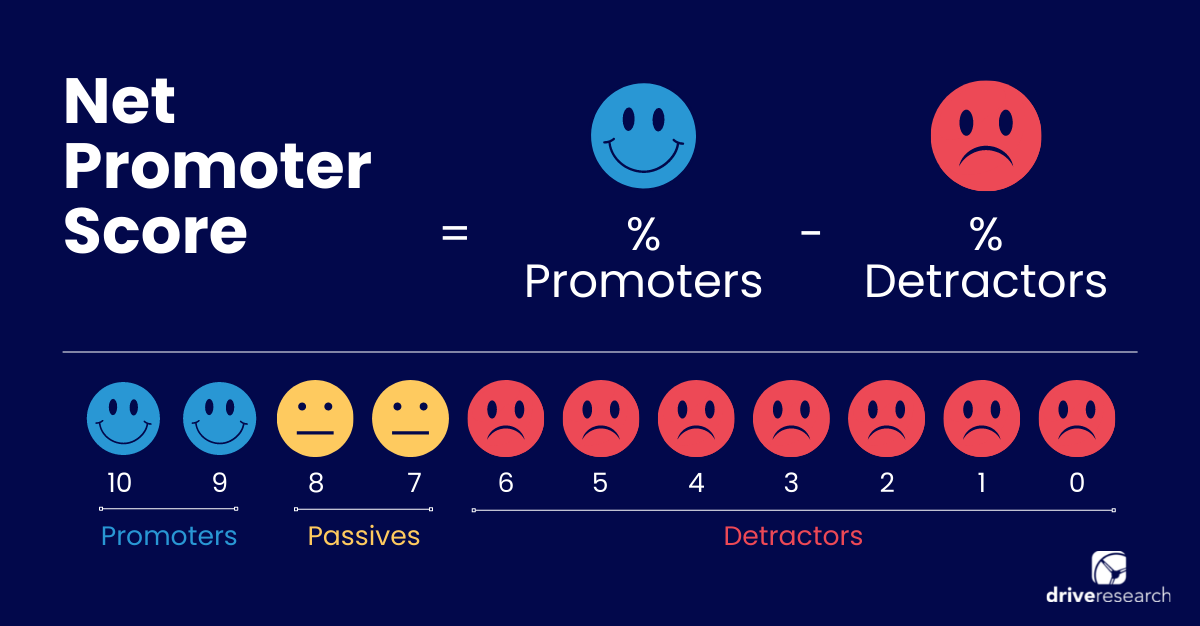
The score ranges from -100 to 100.
NPS between 0 and 50 shows that your business is doing a good job at maintaining customer loyalty, and an NPS of more than 50 shows you’re doing a fantastic job.
💡The Key Takeaway: NPS survey helps you measure how happy a customer is with your retail brand. You need to ask for feedback, categorize respondents, and calculate your NPS. A higher score means you’re doing an excellent job fostering customer loyalty.
When Should I Run an NPS Survey for My Retail Brand?
When to run an NPS depends on the type of survey and your objectives for the market research.
Based on our experience conducting retail market research, the most common surveys to measure NPS are transactional surveys and relational surveys.
Transactional surveys: These are surveys sent immediately after a customer interaction, for example, after a product purchase.
Relational surveys: These are periodic surveys used to measure customer satisfaction over a certain period. Relational surveys are sent frequently to ensure the customer experience is continually improved.
Both are great market research options for retail brands.
Whichever type of survey you choose for your retail brand, note:
- If you send a survey too soon, respondents may not provide enough feedback.
- If you leave it too long, the experiences may not be fresh in their memory.
- Avoid sending too many surveys. Nobody likes being spammed with feedback requests.
💡The Key Takeaway: Measuring net promoter scores for retail is commonly achieved through transactional surveys (sent immediately after purchase) and relational surveys (periodic surveys such as monthly or quarterly).
Why Retail Brands Should Measure NPS
The net promoter score system is one of the best customer experience tools every retail brand should use to evaluate the daily performance of the business. Here’s why.
1. To determine customer loyalty
The number one reason retail brands should measure NPS is to measure customer loyalty.
According to statistics, 59% of consumers are willing to refer brands they like to their friends and family. 66% of US customers spend on brands to which they’re loyal.
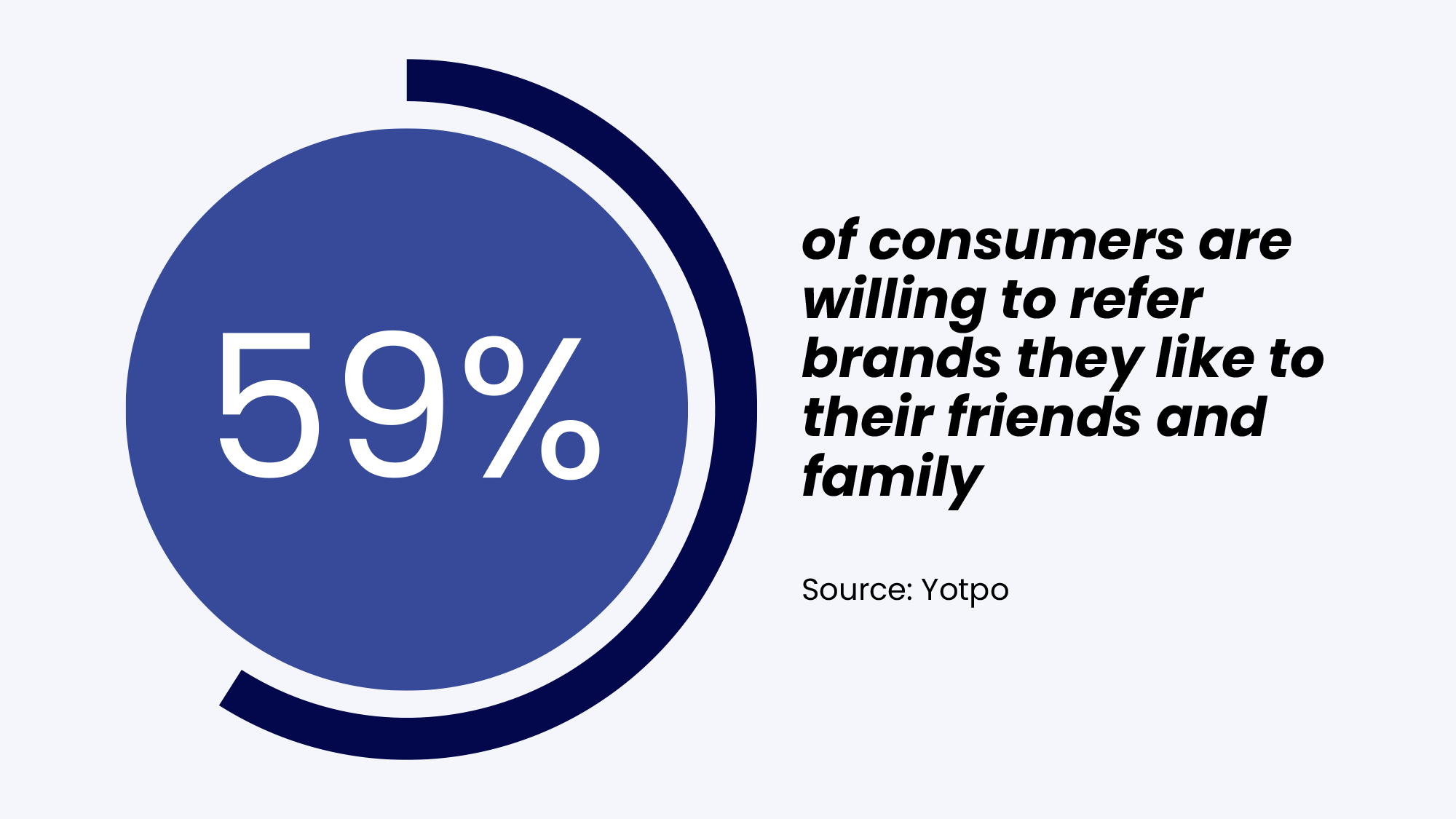
Loyalty determines if customers will continue to do business with you. NPS helps you to quantify and measure your consumer loyalty to help grow your business.
2. To identify areas to improve
The best thing about the NPS survey is that it measures qualitative and quantitative data.
Besides detecting positive, neutral, and negative responses, it also gathers the reason for the score.
By asking the NPS open-ended questions, you can identify challenges and work towards closing the feedback loop.
3. It’s easy to use and adopt
NPS is only a short survey. Customers don’t need to spend 10 to 20 minutes filling out questionnaires.
They only need to rank their experience and provide additional comments if they desire.
Therefore, measuring NPS for your retail store is a quick and easy process, making it the best metric for data collection.
It’s also more cost-effective than conducting customer reviews and focus groups.
4. To minimize customer churn rate
Customer churn rate refers to the number of customers who left the company during a particular time due to poor customer experience.
Therefore, measuring NPS for retail stores helps monitor incoming and outgoing customers and improves customer experience, which leads to higher customer retention.
Better yet, organizations that reduce churn by 5% can increase profits by 25 to 125%.
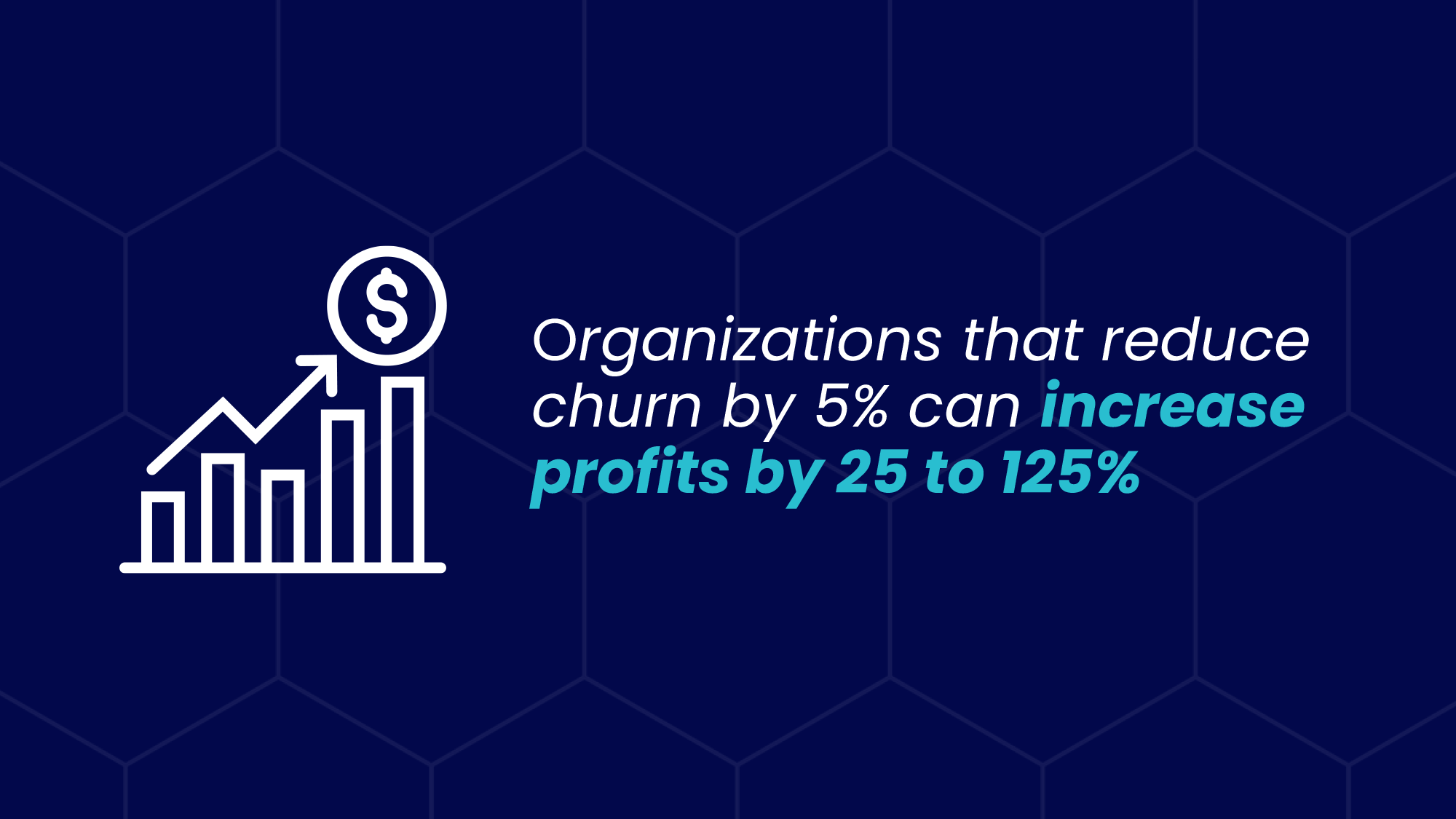
5. To align business plans with customer expectations
Conducting an NPS survey will help your retail brand identify what features and improvements customers expect from the business.
For instance, ask a follow-up question like, “What is the one feature we can improve to make this product better?”
Doing so will encourage customers to share their suggestions, which can help to align your business plan based on customer expectations.
💡The Key Takeaway: There are many reasons a retail brand should measure NPS. Determining customer loyalty, reducing customer churn rate, and identifying areas for improvement are among the top reasons.
What is a Good NPS for Retail? (& How to Improve It)
It’s a loaded question, but a good one to ask. After all, if you calculate your NPS and it’s +53, how do you know if that’s good or bad?
A “good net promoter score" is different for every industry and business type.
Therefore a better approach is to look at your industry’s average NPS score and how your score compares to competitors.
For more context, according to Customer Gauge and their latest CX Benchmarks Report, the average net promoter score for retail and consumer goods is +41.
Below, our retail market research company shares tips for improving your NPS.
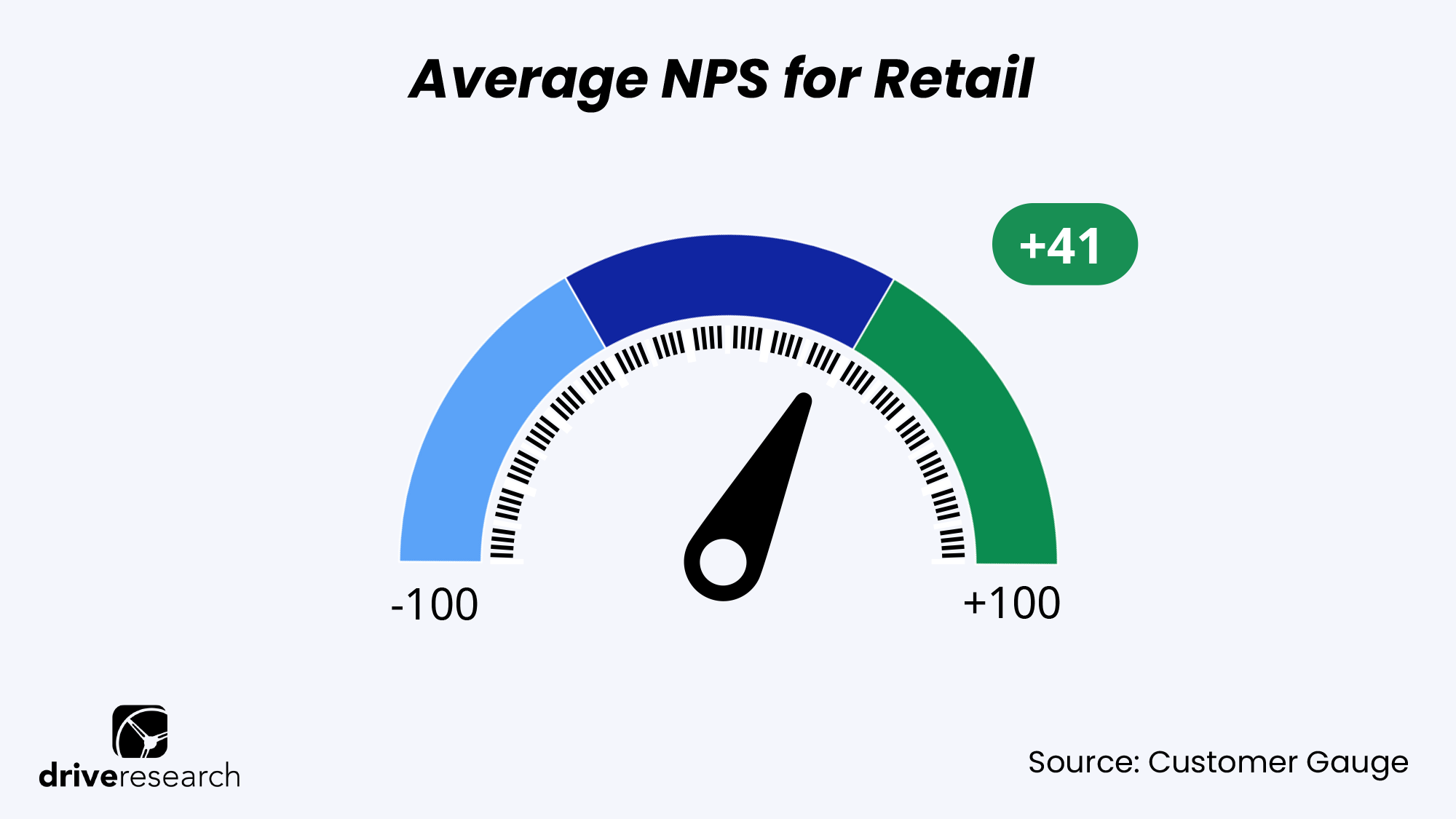
1. Reach out to detractors
Detractors are the people most likely to slow your business growth through negative reviews and criticism. Therefore, they should be the first port of call.
Identify their pain points and appease their complaints.
Sometimes, you can provide additional education on your products or even rectify a customer service issue.
2. Reach out to passives
While we don’t use their rating to calculate NPS, it doesn’t mean that their responses are irrelevant.
If you’re not careful, they can easily become detractors. But, if you pay closer attention to this group, they can easily become promoters and help to bump up that score.
You must earn their loyalty by doing the following:
- Responding to their comments
- Provide relevant information to avoid miscommunication
- Educate them on how to use your products better
- Communicate new changes that improve their experience
3. Reach out to promoters
If you treat your satisfied customers well, the benefits go both ways.
Since promoters are more than likely to recommend your brand, use this as a chance to grow your returns.
- Appreciate their contribution
- Ask them to refer family, friends, and colleagues
- Ask for online recommendations on review sites and social media
💡The Key Takeaway: To improve your store’s NPS, you need to close the feedback loop by reaching out to every respondent and finding ways to make them more satisfied.
Recommended Reading: How to Conduct an Online Survey for a Retail Store
Measure Your Store’s NPS with Drive Research
Drive Research is a full-service market research company specializing in retail. Our team partners with department stores, grocers, wine and spirit shops, and other retail locations to provide insights needed to grow their businesses.
If you're interested in working with a market research company to measure NPS for your retail store, our team can help.
Contact us today via one of the four channels.
- Message us on our website
- Email us at [email protected]
- Call us at 888-725-DATA
- Text us at 315-303-2040

Emily Rodgers
A SUNY Cortland graduate, Emily has taken her passion for social and content marketing to Drive Research as the Marketing Manager. She has earned certificates for both Google Analytics and Google AdWords.
Learn more about Emily, here.

